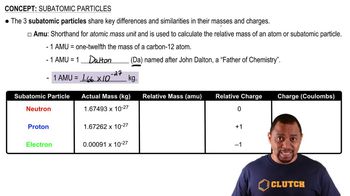Textbook Question
Which of the following nuclides would you expect to be radioactive: 5826Fe, 6027Co, 9241Nb, mercury-202, radium-226? Justify your choices.
1
views
 Verified step by step guidance
Verified step by step guidance


Which of the following nuclides would you expect to be radioactive: 5826Fe, 6027Co, 9241Nb, mercury-202, radium-226? Justify your choices.
Complete and balance the following nuclear equations by supplying the missing particle: (b) 21H + 32He → 42He + ?
Complete and balance the following nuclear equations by supplying the missing particle: (d) 12253I → 12254Xe + ?
Complete and balance the following nuclear equations by supplying the missing particle: (e) 5926Fe → 0-1e + ?